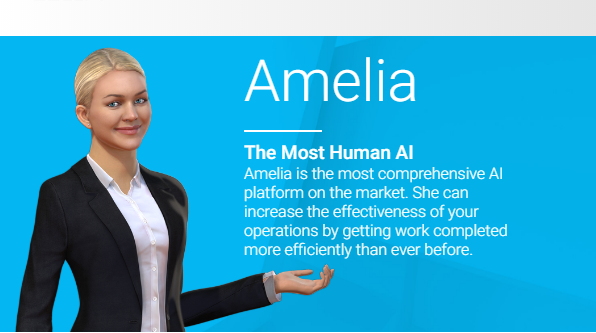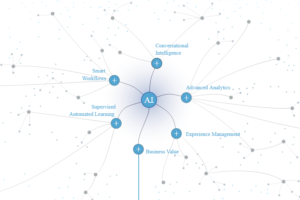Productivity and the overall marketing sector is evolving and booming in various interesting ways. Increasing labour and capital is no more the measuring parameter for the levels of economic growth. AI and Machine Learning is the new factor for production, and it promises to change the basics of economic growth for countries around the world. Recently, the productivity experts and founder have seen a marked decline in the potential of growth in labour and capital investment to drive economic progress.
Labour and capital have been the two most important levers of productivity growth from decades. However, with the changing market, these two are no longer able to maintain the steady movement of prosperity, enjoyed earlier in economies. Therefore, with the new emergence of modern technologies, most of the developed economies are entering the new world of Artificial Intelligence.
As per the analysis by Accenture, twelve developed economies have found AI potent in doubling their annual growth rates, regarding the economy, by 2035.
Although the persisting pessimism over the decades, is unwarranted, with the latest researches, AI is known to be potent enough to overcome the limitations carried by labour and capital. It is also said to bring out new sources of growth and value.
How Experts define AI?
Futurists, entrepreneurs and productivity experts have their own opinions and predictions about AI. As per the Getting Things Done inventor, David Allen, “Systems will get better at presenting the relevant data to optimise our experience in every situation – at the right place, at the right time. We need to think of productivity systems as supporting systems for our decision process.” This means that we are still not on the path of allowing AI to overpower our decisions and automate them accordingly. In fact, we humans will become employee AI to enhance our ability of decision making in different situations.
This also seems to be a safe method of employing AI, as most founders and productivity experts would not trust a machine to make decisions for them. However, while making important decisions, AI can look up for facts and other information to help humans. Allen further adds, “neither these new presentation forms nor trends like AI will decide for you. That will not work. I see that AI can support your decisions, but we will still use our heads to make decisions.
New Factor of Production
GDP growth rate all across the globe have been diminishing. Although these measuring matrices have been used for over three decades now, key measuring points of economic efficiency are moving downward. On the other hand, labour force growth in the developed economies is almost stagnant and even declining in several countries.
As the commentators say, new normal in the economic world is the stagnant economy. One of the most influential economists, Robert Gordon believes that great inventions like the telegraph and steamship are not going to be repeated shortly. Hence, he argues that the productivity growth rate for the next quarter century, is going to move at the same sluggish pace, we have seen since 2004. He points out the deficiency of innovation combined with incompetent demographic trends. From increasing wealth inequality to flagging educational accomplishment, these factors will slow down the normal economic growth.
Does that mean we are reaching the end of growth?
The data mentioned above is no doubt accurate to the max, but it misses out the effective contribution of new technologies in the economic growth. Traditionally, economic growth is directly proportional to the labour and stock of capital increase. Any growth in the economy, which occurs due to technological change and innovations is added in the total factor productivity (TFP).
With the great technological enhancements over the last few decades in the sector of IT, electricity and railways, we have seen an unbelievable boost in productivity. Innovations have a growth driving ability to increase TFP. In the same perspective, now we see a new transformation in the field of technologies, like artificial intelligence. If productivity experts see AI as a technological invention, some amount of growth can be expected, but not anything transformational.
What if AI proves to be a new factor for production?
If we can see AI as a hybrid to labour and capital, it can copy all the labour activities at a higher speed and scale. In some areas, AI can also learn and perform tasks faster than human capabilities. AI is suitable for human tasks on both intellectual and physical platform.
For instance, where humans can take up to six months for reviewing 1,000 legal documents, AI can do the same for a couple of days. Similarly, AIs such as intelligent machines and robots can take up the form of physical capital in some sectors. Also, it is self-learning capabilities, actually helps it in continuous improvement, which can eventually prove to be a productivity enhancer.
Channels of Growth via AI
Visualizing AI as the new factor of production, it can ensure growth in various essential ways.
Intelligent Automation
Unlike the traditional solutions of automation, the new AI driven intelligent automation is on the path of growth with the help of some set of features. Its capability to automate complex physical tasks is the first feature to consider. Tasks that require agility and adaptability, like warehouse storage retrieving, is where companies used to rely on the human ability to navigate through crowded spaces and avoiding obstacles in movement. Robots by Fetch Robotics, have in-built 3D depth-sensors and lasers for safe navigation and work.
Unlike the traditional automation technology, AI driven automation has the ability to solve problems related to job titles and other industries. For example, Amelia, the AI platform by IPsoft, has capacity to process natural language.

Amelia is great at diagnosing problems and suggesting solutions. This AI platform has helped many maintenance engineers with its ability to answer the 120 most frequently asked questions.
By using big data processing technologies and machine learning, an AI platform can read and review 22 million scientific papers at one go and analyse any serious emerging risks.

Most powerful aspect of AI is self-learning ability and repeatability at scale. If we take the example of Amelia, it is exactly like a conscientious employee, who can recognise gaps in knowledge and work accordingly. Also, if Amelia is given a question that she is not aware of, she smartly escalates the case to her human colleague.
As per entrepreneur Elon Musk, AI could come out to be the biggest existential threat to humanity. On the other hand, futurist Ray Kurzweil presents the optimistic view about AI that it will help us create “major strides in addressing the world’s grand challenges.” However, the truth lies in the fact that how do we integrate the transition of artificial intelligence into human work and life. To complete the AI promise, being the new factor of increase in productivity, which can reinstate economic growth, relevant studies and stakeholders must be genuinely prepared.
To address the challenges we can face with increasing dominance of AI, intellectually, politically, technologically, socially and ethically, we should be ready. Understanding the complexity of issues is the first step towards the successful integration of machine intelligence with human intelligence.

Leave a Reply